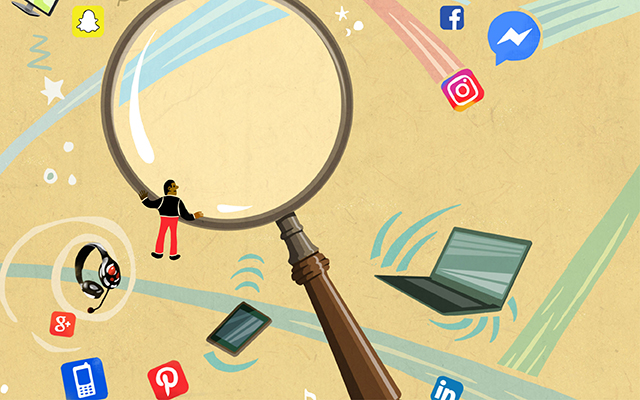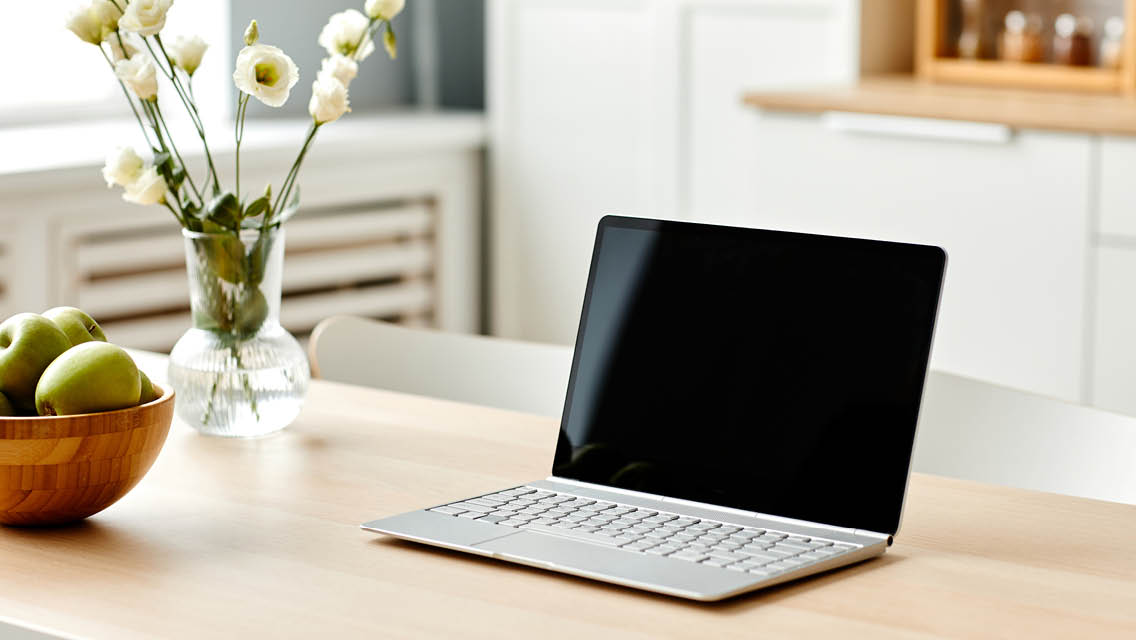Cal Newport, PhD, doesn’t have a Facebook or Twitter account. He gets news mostly from his local newspaper and National Public Radio. An accomplished academic and author, he provides no contact form on his website, purposefully making it difficult for people to reach him for interviews.
In the age of endless stimuli, Newport, an associate professor of computer science at Georgetown University, believes in cultivating an ethic of “deep work” — focusing on one cognitively demanding task at a time. While his personal commitment to depth poses challenges for journalists hoping to quote him in an article, it’s reaped professional rewards. In the decade since obtaining his BA, Newport has earned a PhD, published four books, written numerous peer-reviewed papers, and earned a tenure-track position at an elite university.
“The ability to stay steady on one target and ignore everything else operates in the brain’s prefrontal regions,” writes Daniel Goleman, PhD, in his best-selling book Focus: The Hidden Driver of Excellence. Specialized circuits in this area allow us to tune in to what’s important (the person we’re having a conversation with in a busy restaurant) and tune out what isn’t (the conversation at the next table).
While our attention is powerful, it’s also fragile. It “continually fights distractions, both inner and outer,” explains Goleman.
The way we use our attention also shapes and controls our reality. “If we don’t consciously choose where we want to direct our attention, there will always be something in our path to misdirect it,” writes former Microsoft and Apple executive Linda Stone, who coined the term “continuous partial attention” — the idea that we pay partial attention continuously out of a desire to not miss anything, always on the lookout for something more interesting than what’s before us.
While paying close attention can be challenging, there are actions we can take to strengthen this capacity and lay the groundwork for becoming more attentive.
Get Emotional Support
Focused attention is a component of cognitive ability, but it also involves our emotions.
“Emotional cues are not only ubiquitous in our lives and environment, they are also strong distractions, often interfering with our ability to both -accomplish tasks and maintain equanimity,” writes Richard Davidson, PhD, in his best-selling book, The Emotional Life of Your Brain.
The power of emotion to affect our ability to focus led the neuroscientist to include attention — along with resilience, outlook, social intuition, self-awareness, and sensitivity to context — as one dimension of what he calls the brain’s “emotional style.” Our emotional style dictates, with some consistency, how we respond to our experiences, and it is governed by specific, identifiable, measurable brain circuits.
Like all the factors comprising emotional style, attention lies on a spectrum, with narrow focus on one end and distraction on the other. If you tend to be hyperfocused, you might find yourself so involved in a project or one side of an argument that you miss the bigger picture. If you land on the unfocused end, you may find when you read the final words on a page that you’ve forgotten what was written at the top.
There is also more than one type of attention. Davidson describes selective attention as the capacity to focus on certain features of an environment and ignore others. It’s a key building block of self-awareness.
Another type — open, nonjudgmental awareness — involves the ability to recognize signals from the external environment, as well as any thoughts and feelings that pop up in our brains, without getting stuck on any one stimulus.
Fortunately, even if we tend toward hyperfocus or distraction, the brain’s plasticity allows us to adjust our style of paying attention.
For example, Davidson advises the überfocused to keep their office doors open, place photos of loved ones on their desks, and scatter books and magazines around as temptation to pick one up. Those who are more easily distracted can try keeping the office door closed and removing extraneous stimuli.
You might also try these attention-building practices:
• Daily mindfulness meditation, Davidson explains, can help improve concentration. “We have found that long-term meditation practitioners, when engaged in the simple practice of focusing on an object, show higher levels of activation in the prefrontal cortex and parietal cortex,” he says. This -“executive” part of the brain also governs self-awareness and decision-making.
• Body-scan exercises can improve self-awareness, he notes. Because your focus moves across your whole body, scanning trains your mind to move from detailed attention on one spot — such as your big toe — to wider awareness. This can be helpful to people who struggle with either distraction or hyperfocus.
“Investigating physical sensations is one of the best ways for us to learn to be present with whatever is happening in the moment and to recognize the difference between direct experience and the add-ons we bring to it,” says meditation instructor Sharon Salzberg, author of Real Happiness: The Power of Meditation.
• Breathing exercises are another good tool for boosting self-awareness and dealing with strong emotions. To help stressed-out kids stabilize their thinking, connect more deeply, and refocus, actress Goldie Hawn’s MindUP program integrates deep-breathing exercises in its pre-kindergarten-through-eighth-grade curriculum. The program shows teachers how to lead students through three-minute “brain breaks.” These breaks, taken three times a day, calm the brain’s amygdala, which plays a primary role in emotional response. This helps improve students’ capacity to focus and retain information.
• Monotasking allows for and strengthens focused engagement, Davidson explains. Continually switching between tasks, on the other hand, saps your attention. Doing one thing at a time enhances focus and boosts your short-term memory. Multitasking causes your body to release more stress hormones, such as cortisol and adrenaline, which can lead to health problems when chronically elevated. (For more on the impact of stress, see “Hormonal Harmony.”)
Go Deep
Cal Newport exemplifies the attention-strengthening benefits of monotasking. In addition to helping him make significant career advances quickly, his deep-work ethic has personal benefits, too.
“For the most part, I don’t touch a computer between the time I get home from work and the next morning when the new workday begins,” he writes in Deep Work: Rules for Focused Success in a Distracted World.
“This ability to fully disconnect, as opposed to the more standard practice of sneaking in a few quick work email checks, or giving in to frequent surveys of social-media sites, allows me to be present with my wife and two sons in the evenings, and read a surprising number of books for a busy father of two.”
Studies have shown that reading books improves cognitive function, working memory, and the ability to detect and understand other people’s emotions. So by spending time reading, Newport is doing the kind of focused work that enhances his ability to pay attention. (If it feels like you don’t have time to read books, reconsider the time you spend on other activities. For example, Americans currently spend about four hours per day watching television.)
To strengthen your ability to focus, try to minimize “shallow work,” those activities we often perform while distracted that don’t demand deep thought — mindlessly scrolling through email or social-media feeds, for example. Like Newport, you might consider avoiding social media altogether or scheduling specific time periods when you use the internet instead of randomly checking it throughout the day.
In fact, Newport recommends scheduling every minute of your day. “We spend much of our day on autopilot — not giving much thought to what we’re doing with our time,” he writes. “It’s difficult to prevent the trivial from creeping into every corner of your schedule if you don’t face, without flinching, your current balance between deep and shallow work, and then adopt the habit of pausing before action and asking: What makes the most sense right now?”
And when it comes to email, Newport suggests sending and responding to only those messages that really matter.
Manoush Zomorodi, host of the technology-focused podcast Note to Self and author of Bored and Brilliant: How Spacing Out Can Unlock Your Most Productive and Creative Self, agrees. “People confuse productivity with responsiveness,” she says.
To help workplaces become more focused, Zomorodi suggests they purposefully and thoughtfully use collaborative platforms, such as Slack. “The idea is that you have channels where you can talk to your colleagues, so you aren’t on email as much,” she says. “But what happens is that we spend so much time updating that we don’t have the opportunity to do the harder thinking.”
Cutting down on needless communication reduces stress. Zomorodi notes that her readers and listeners are often seeking ways to handle workplace burnout, much of which relates to consistent demands on their attention. “The pinging and constant updating is driving people crazy, and making them feel like they don’t have time to do their actual work.” (For more insights from Zomorodi, see “Creative Inspiration: Manoush Zomorodi.”)
To ease employees’ work-related stress and improve focus and productivity, some companies, including Volkswagen and Deutsche Telekom, have attempted to change the “always-notifying” workplace culture by limiting after-hours and weekend email use. You can do this for yourself by removing the email app from your phone or turning your phone off on weekends and evenings, and by disabling notifications and alerts.
Take Breaks
A few years ago, while on a sabbatical from Silicon Valley’s daily distractions, futurist and researcher Alex Soojung-Kim Pang, PhD, decided to study the habits of Charles Darwin, Winston Churchill, Stephen King, and other productive people. Although these legendary creatives designed their lives around their work, they didn’t spend long days toiling away.
Instead, they organized their days to include intensive blocks of concentrated work — typically around four hours — followed by a period of intentional rest, and then another shorter bout of less-intense work.
“Deliberate rest and focus complement and reinforce each other,” says Pang, author of Rest: Why You Get More Done When You Work Less. “Not only does rest give you time to recharge the energy you spend at work, but improving your capacity to detach from work deepens your ability to concentrate and be present on the job.” (For more on this concept, see “Deliberate Rest.”)
Rest is an antidote to attention fatigue, a collection of cognitive symptoms that occur when the brain’s inhibitory system — which tunes out distractions — gets worn down from use. And resting doesn’t necessarily mean napping, although Churchill’s afternoon snooze was a nonnegotiable part of his daily routine.
Since concentration is demanding, active restorative breaks can also help your body refresh the oxygen and energy your brain needs. Pang cites a group of scientists who relax by rock climbing as an example of “deep play” — an activity that provides many of the same psychological rewards as work.
Scientific experimentation and rock climbing require the same kind of cognitive problem-solving, Pang explains. “They both involve seeing the big challenge and then breaking it down into little parts.”
The absorbing and challenging nature of deep play provides room for finding yourself in flow — the intense state of concentration that leaves you feeling energized and that benefits both your work and your well-being. (For more on the connection between flow states and happiness, see “Go With the Flow.”)
Smooth the Transitions
Increasing your ability to transition between tasks is another key to improving attention. Failure to disengage fully from one task before moving on to another can leave your mind spinning in loops of chronic anxiety. It can also impinge on your performance at work and in relationships.
In the late 1990s, while working as a consultant, Sophie Leroy, PhD, began seeing many employees struggle to pay attention during meetings. After conference calls, she noticed that distracted participants would often express a desire to have spent more time on a topic that had been discussed for several minutes.
In a 2009 paper, Leroy outlined the phenomenon of “attention residue” — remaining thoughts about one task that distract us from our present one.
Now an associate professor at the University of Washington Bothell’s School of Business, Leroy maintains that strong performance depends on an ability to successfully transition our attention. For example, when we glance at our phones, go to a meeting, and proceed directly to an important conversation with a significant other without taking a break, our brains never get a chance to process information, integrate ideas, or find temporary closure.
“It’s like windows staying open in our brains, and it makes it hard to focus on the intervening work,” Leroy says. “If I am still thinking about task A while trying to do task B, I don’t have the cognitive capacity to process those two tasks at the same time and do a perfect job on both tasks.”
To help manage shifts of attention, Leroy suggests making a “ready-to-resume” plan — a routine to close the task you’re stepping away from and free up your attention for a new activity. This is as simple as taking one minute to write a list of what still needs to be done to complete the unfinished task. When you close that list, you’re ready to move on to the next thing.
In Leroy’s studies, participants who switched tasks without a plan remained distracted and their performance was inhibited. By contrast, those who made a still-to-do list showed improved performance on the next task and less stress from attention residue.
Pausing between activities is a gentle way of bringing awareness into the present moment. It allows us to reflect on what we value and how we want to use our attention. We can mindlessly give it away or direct it toward something with intention. As Linda Stone notes, it’s a powerful choice we get to make, every moment of every day.
This originally appeared as “Play Close Attention” in the September 2018 print issue of Experience Life.




This Post Has 0 Comments